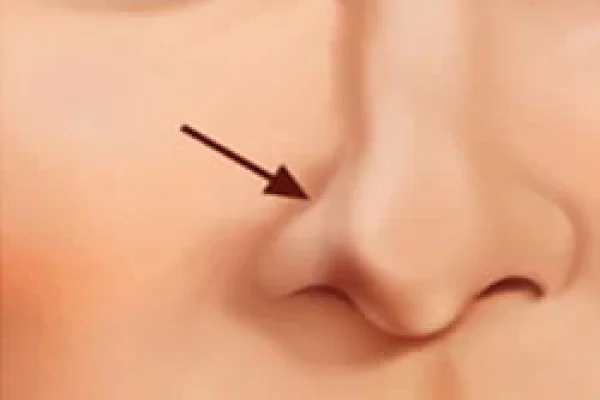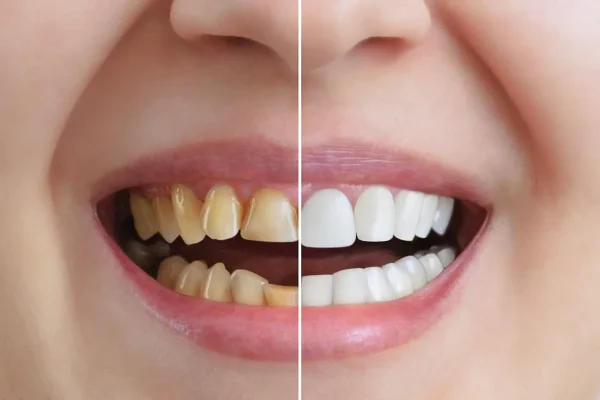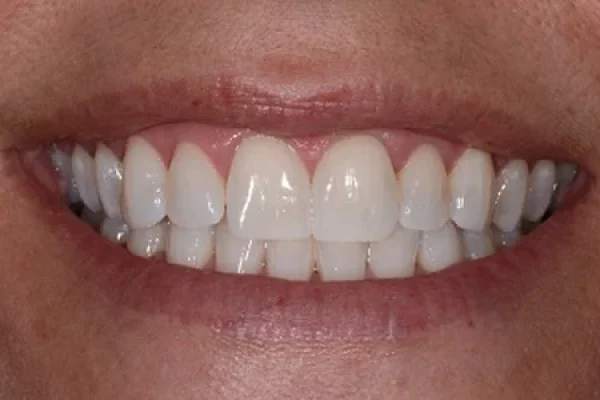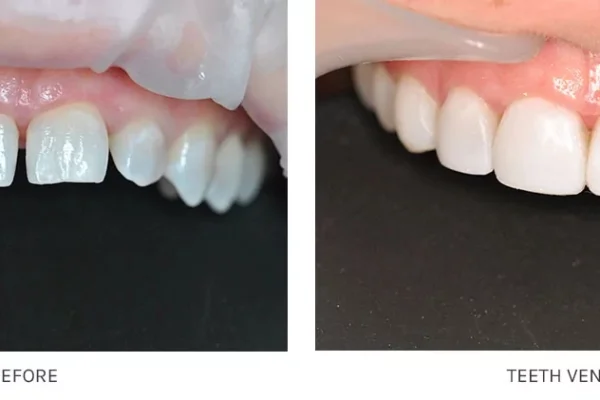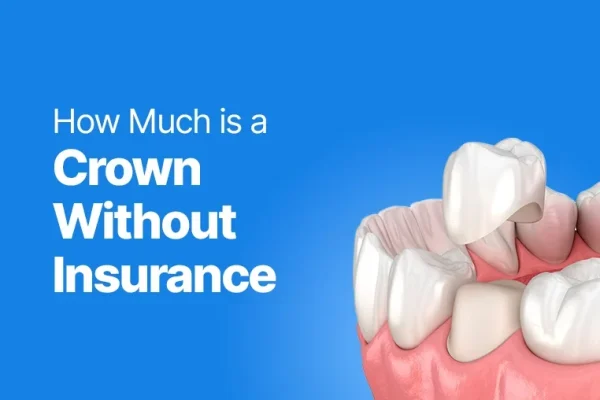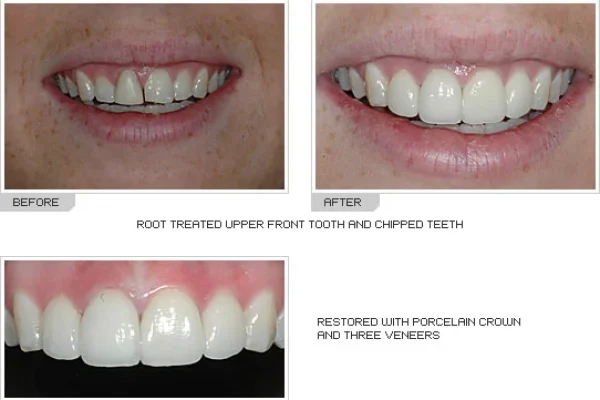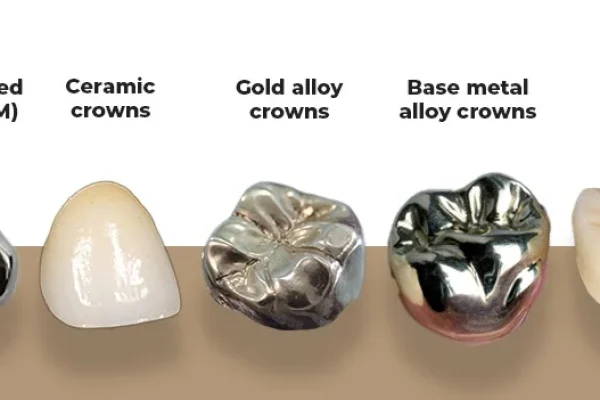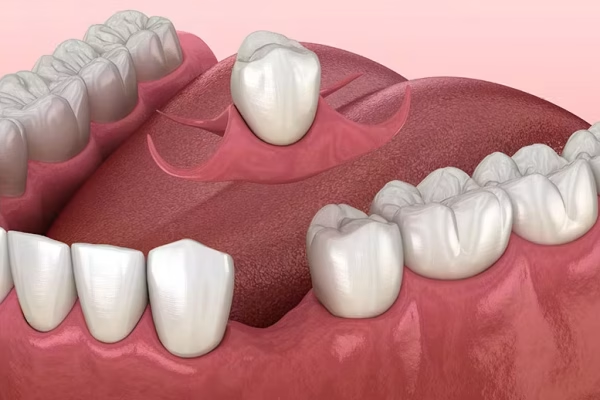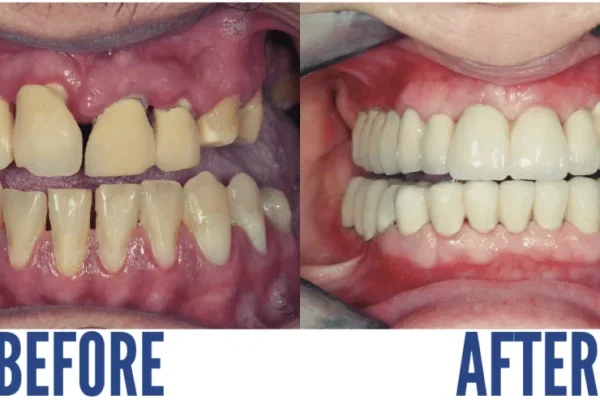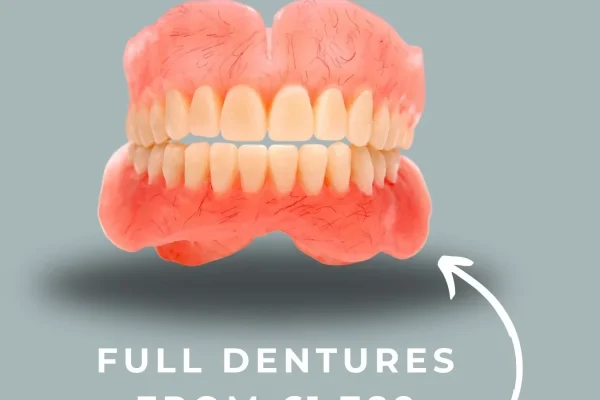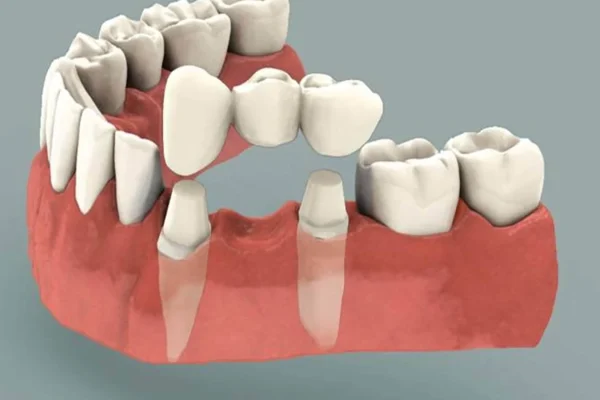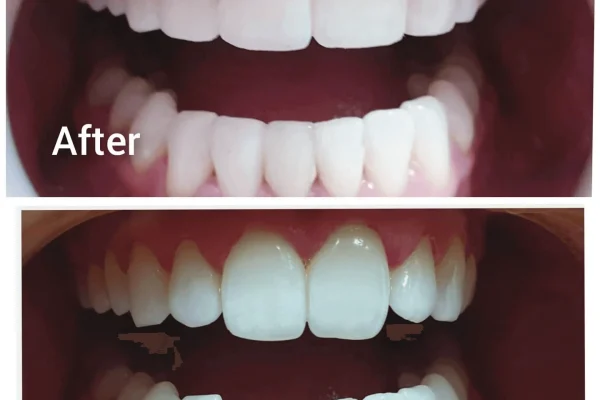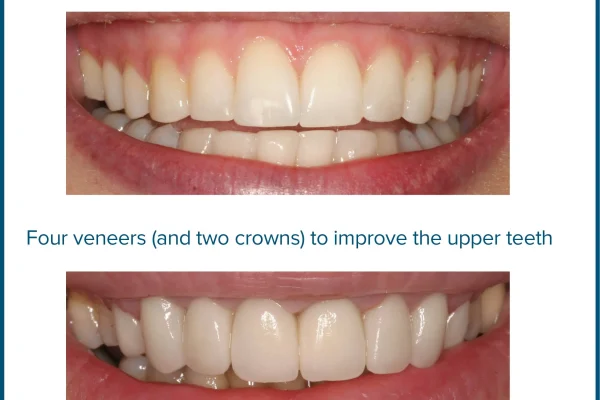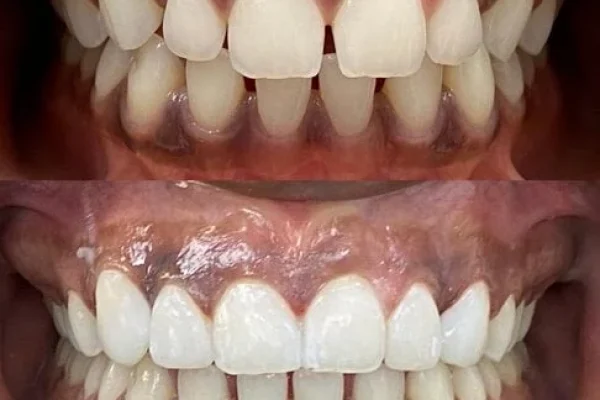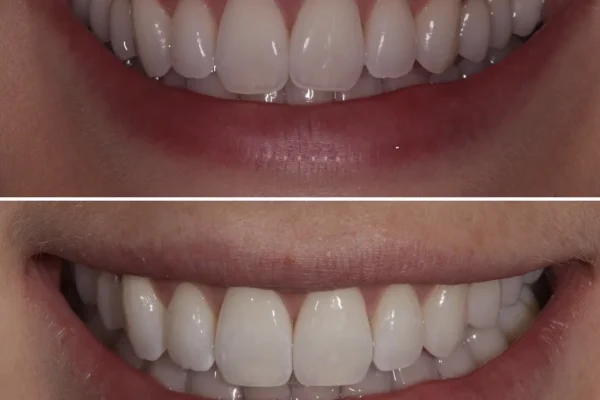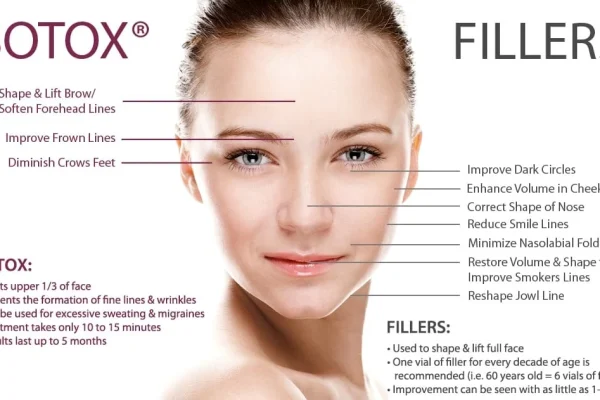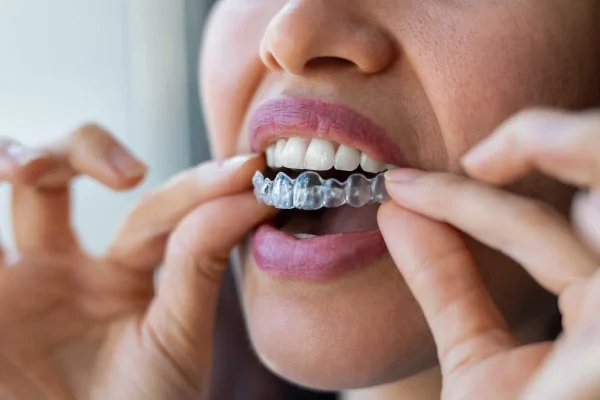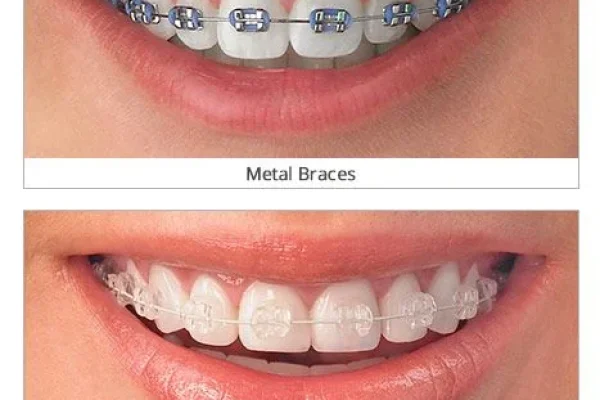
Key Takeaways
- You *can* indeed bleach your teeth at home using various methods like commercial kits or DIY remedies.
- Safety is paramount: always follow product instructions, consult your dentist before starting, and be aware of potential risks such as tooth sensitivity and gum irritation.
- Commercial home teeth whitening kits are generally more effective for significant whitening compared to most natural remedies.
- Natural remedies like baking soda or oil pulling may offer mild, superficial stain removal; however, harsh ingredients like lemon juice should be avoided due to enamel damage risk.
- The “fastest” whitening results are often superficial; true, deep bleaching takes time, and it’s important to be aware of specific regulations, such as those in the UK.
How to Bleach Teeth at Home: Your Comprehensive Guide to a Brighter Smile
The quest for a luminous smile is practically a modern-day Holy Grail. Scroll through any social media feed, and you’re bombarded with gleaming grins. It’s no wonder, then, that the phrase “bleach teeth at home” has become a siren song for many. The allure of achieving professional-looking results without the hefty price tag or the multiple trips to the dentist is undeniably potent. But what does it *really* mean to “bleach teeth at home”? And more importantly, how can you navigate this dazzling, yet sometimes bewildering, landscape to emerge with a smile that’s not just whiter, but also healthy? This comprehensive guide is your trusty map. We’ll delve into the science, sift through the plethora of products, scrutinize the DIY trends, and arm you with the knowledge to make informed decisions. Whether you’re considering a sophisticated “home teeth whitening” kit, curious about natural alternatives for “whitening teeth at home,” or simply wondering if it’s all too good to be true, we’ve got you covered. Prepare to explore the nuances of achieving that coveted radiance, understanding the crucial balance between aesthetic desire and dental well-being, because a truly brilliant smile starts with a smart approach.
How Can You Bleach Teeth at Home? An Initial Overview
So, you’re pondering the possibility, typing “Can you bleach your teeth at home?” into your search bar with a mix of hope and trepidation. Let’s cut to the chase: yes, you absolutely can embark on a journey to “bleach teeth at home.” However, it’s crucial to understand what this actually entails and how it stacks up against professional dental bleaching. In popular understanding, to “bleach teeth at home” generally refers to using over-the-counter (OTC) products or concocting DIY remedies designed to lighten the shade of your teeth outside a dental professional’s direct supervision. This contrasts sharply with in-office professional bleaching, which involves your dentist applying higher-concentration bleaching agents, often activated by specialised lights or lasers, under controlled clinical conditions. The science behind how most teeth whitening agents work is fascinatingly straightforward: they typically employ an oxidizing agent, like hydrogen peroxide or carbamide peroxide (which breaks down into hydrogen peroxide). These agents penetrate the porous outer layer of your teeth (enamel) and even the dentin beneath, to break down chromogens – the pigmented compounds that cause stains and discoloration – through a chemical reaction. Think of it as a deep clean at a molecular level.
The general feasibility of achieving noticeable results with “whitening teeth at home” is quite good for many, especially if your teeth are stained from common culprits like coffee, tea, red wine, or smoking (extrinsic stains). Various methods exist, a whole spectrum, really. On one end, you have commercially available “home teeth whitening” kits, which can range from whitening strips and paint-on gels to tray-based systems, some even incorporating LED lights. These products are formulated for consumer use, meaning they contain lower, legally permissible concentrations of active ingredients compared to what a dentist would wield. On the other end, you’ll find a plethora of DIY remedies, often touted as “natural” solutions, utilising household staples. It’s important to clarify that various terms like “teeth whitening at home” and its myriad keyword cousins essentially all point to this common, aspirational goal: achieving a whiter, brighter smile without stepping into a dental clinic for the procedure itself. The landscape is vast, offering a solution for almost every budget and preference, but with this variety comes the need for discernment and a keen understanding of what you’re signing up for. The key is not just *if* you can, but *how* you can do it effectively and, most importantly, safely.
What Are the Pros and Cons of At-Home Teeth Bleaching?
Embarking on the “at-home teeth bleaching” adventure, as detailed in many a guide like “How to Whiten Teeth: Pros and Cons of Bleaching,” comes with a compelling list of advantages, making it an attractive option for those seeking a brighter smile without breaking the bank or rearranging their life. The primary allure is undoubtedly convenience. You can perform treatments on your own schedule – perhaps while binge-watching your favourite series, during your evening wind-down, or even overnight with certain products. There’s no need to book appointments or travel; your bathroom transforms into your personal whitening station. Then there’s the cost factor. Generally, “home teeth whitening” options are significantly more budget-friendly compared to professional dental procedures, which can run into hundreds, if not thousands, of pounds or dollars. This accessibility democratises the pursuit of a whiter smile. Lastly, the privacy of doing it at home appeals to many who might feel self-conscious about the process or prefer to keep their cosmetic enhancements under wraps. You control the environment and the experience, free from the clinical setting.
However, it’s not all sunshine and sparkling smiles. The disadvantages need careful consideration. One significant risk is achieving uneven results. Unlike a dentist who can ensure custom-fit trays and precise application, DIY methods or ill-fitting generic trays can lead to patchy whitening, particularly if your teeth aren’t perfectly straight or if the product isn’t applied uniformly. Then there’s the potential for increased tooth sensitivity or gum irritation. If products are misused – applied too frequently, left on for too long, or if they seep onto the gums – you can experience discomfort ranging from a mild zing to more persistent pain. The effectiveness of “whitening teeth at home” can also vary dramatically. It depends heavily on the specific product, the concentration of active ingredients, the type of staining you have (extrinsic surface stains respond better than deep intrinsic stains), and your individual tooth structure. Furthermore, results often take longer to achieve than with in-office treatments, requiring consistent application over days or weeks to see a noticeable difference. It’s crucial to set realistic expectations; a Hollywood-white smile overnight is rarely in the cards. The extent of whitening is also intrinsically linked to your initial tooth shade and the underlying cause of discoloration. For instance, teeth yellowed by age or lifestyle factors typically respond better than teeth with greyish hues or those stained by certain medications like tetracycline.
How Can You Ensure Safe Teeth Whitening When Doing It at Home?
When you decide to take the plunge into “whitening teeth at home,” prioritising safety is paramount. The glittering promise of a brighter smile should never overshadow the fundamental need to protect your dental health. The cornerstone of any “teeth whitening that is safe” approach is, without a shadow of a doubt, meticulously reading and religiously following all product instructions. This might sound like common sense, but in the rush for results, it’s a step too easily skimmed over. Manufacturers provide these guidelines for a reason – to maximise efficacy while minimising harm. Pay close attention to recommended application times, frequency of use, and any specific preparation or aftercare advice. Deviating from these instructions is where things can often go awry, increasing the likelihood of encountering those dreaded side effects.
It’s vital to be acutely aware of the potential “risks of home kits.” While generally safe when used correctly, misuse can lead to a host of unwelcome issues. Chemical burns to the gums and soft tissues of the mouth are a real concern if the whitening agent, especially peroxide-based gels, comes into prolonged contact with these delicate areas. This is why properly fitting trays or carefully applied strips are so important. Prolonged tooth sensitivity, beyond a mild and temporary twinge, can occur, making eating and drinking an uncomfortable experience. In more severe cases, or with overly aggressive or abrasive methods, there’s even a risk of damage to the tooth enamel. Over-bleaching can make enamel more porous and weaker over time, while highly abrasive substances in some DIY concoctions can physically wear it away, leading to irreversible damage. This is why a gentle, patient approach always trumps a gung-ho, quick-fix mentality.
Before you even unbox a whitening kit or mix up a home remedy, the wisest first step for “safe teeth whitening at home” is to consult your dentist. This is especially crucial if you have any pre-existing dental conditions such as cavities, gum disease (gingivitis or periodontitis), receding gums, or existing dental work like crowns, veneers, fillings, or bonding. Your dentist can assess your oral health, determine the cause of your tooth discoloration, and advise whether at-home whitening is a suitable and safe option for you. Remember, whitening products won’t change the colour of dental restorations, which could lead to a mismatched smile if you whiten the surrounding natural teeth. Actionable tips for safer whitening include choosing reputable brands that provide clear ingredient lists and ideally have some clinical backing or dental association approval. Check for safe ingredient concentrations – in many regions, there are legal limits on the peroxide levels in OTC products. Never exceed the recommended application times or frequency in an attempt to speed up results; more is not always better and can often be harmful. If you’re particularly concerned about sensitivity, consider performing a patch test by applying a tiny amount of the product to a single tooth or a small area of your gum (if applicable and instructions allow) to gauge your reaction before committing to a full application. Your smile’s health is the foundation of its beauty.
What’s Considered the Best Way to Whiten Your Teeth at Home: Commercial Kits or Natural Remedies?
The million-dollar question on many a hopeful lip: “What’s the best way to whiten your teeth at home?” Is it the sleekly packaged commercial “home kits” promising scientifically formulated brilliance, or the earthy allure of natural, DIY teeth whitening remedies whispered about in online forums and wellness blogs? The truth, as it often is, isn’t black and white (or, in this case, perfectly white). It’s deeply subjective and hinges on a constellation of personal factors. Let’s provide an overview comparing these two broad avenues. Commercial “home teeth whitening kits” typically use controlled concentrations of chemical bleaching agents like hydrogen peroxide or carbamide peroxide, or newer alternatives like PAP. They often come with customisable or pre-formed trays, strips, or pens for application, and sometimes LED lights purported to accelerate the process. Their main selling points are predictable (within a range) results based on formulated active ingredients and a structured approach to treatment. Natural or DIY remedies, on the other hand, lean on ingredients readily available in most kitchens or health food stores – think baking soda, activated charcoal, fruit peels, or various oils. Their appeal often lies in the perception of being “gentler,” more “holistic,” or free from “chemicals,” alongside being incredibly cost-effective.
When you’re mulling over your options, several factors should sway your decision. Consider your desired level of whitening: are you aiming for a subtle lift of a few shades, or a more dramatic transformation? Commercial kits are generally more potent for significant shade changes. Your budget will play a role; DIY is undeniably cheaper upfront, though kits can offer better value if they deliver lasting results. Think about your time commitment; some kits require daily application for a couple of weeks, while some natural methods might be quicker to apply but need more frequent repetition for any noticeable effect. Crucially, assess your existing tooth sensitivity. If your teeth are already prone to twinges, you might lean towards products specifically designed for sensitive teeth or explore natural options reputed to be milder (though “natural” doesn’t automatically mean “gentle” or “safe,” a point we’ll hammer home). Your comfort with different types of ingredients is also key. Some individuals are wary of peroxide-based products, while others are skeptical about the efficacy or safety of unregulated DIY concoctions.
Briefly touching upon the query, “What about home kits and beauty salons for teeth whitening?”, it’s important to differentiate. When we discuss “home kits” here, we’re focusing on products designed for self-application. Beauty salon teeth whitening, in many jurisdictions like the UK, is a legal grey area if performed by non-dental professionals, especially if strong bleaching agents are used, and often carries significant risks due to lack of dental training. This guide prioritises routes you can control safely yourself or under dental guidance. Ultimately, acknowledging that the “best way” is subjective is liberating. It depends heavily on your individual circumstances – your dental health, the nature and severity of your tooth discoloration, your lifestyle, and your personal philosophy on health and beauty treatments. There’s no universal champion, only the best choice *for you*, made with careful consideration and, ideally, a nod from your dentist.
What Should You Know About Home Teeth Whitening Kits as a General Concept?
When you venture into the realm of commercial solutions, you’ll encounter a dazzling array of “home teeth whitening kit” options, each promising a path to a brighter smile. Understanding what a typical “teeth whitening home kit” or “home teeth whitening kit” (yes, the phrasing varies, but the goal is the same!) generally includes is the first step to demystifying the process. Most comprehensive kits will feature a core whitening agent, usually in gel form, dispensed from syringes or pens. To apply this gel, kits often provide either custom-moldable mouth trays (which you soften in hot water and then bite into for a personalised fit) or pre-filled trays. Some kits, particularly those at a slightly higher price point or touting faster results, will include an LED accelerator light – a small, handheld device or a tray-integrated light that emits blue light, claimed by manufacturers to enhance or speed up the whitening reaction of the gel. To help you track your progress, a shade guide – a plastic strip with teeth of varying shades – is often included, allowing you to compare your tooth color before and after the treatment cycle. Recognizing the common issue of sensitivity, many kits also thoughtfully provide desensitizing gels or swabs to be used after whitening sessions to soothe teeth and gums.
The engine driving these kits lies in their active ingredients. The most common workhorses are hydrogen peroxide and carbamide peroxide. Carbamide peroxide is a more stable compound that breaks down into hydrogen peroxide (roughly at a 3:1 ratio, meaning 10% carbamide peroxide yields about 3.5% hydrogen peroxide) and urea. This slower release of hydrogen peroxide is sometimes considered gentler by users. More recently, newer alternatives have emerged, such as Phthalimidoperoxycaproic Acid (mercifully shortened to PAP). PAP is a non-peroxide whitening agent that aims to oxidize stains without releasing free radicals, which is marketed as a potentially less sensitivity-inducing option. The general mechanism behind these active ingredients is their ability to penetrate the enamel and dentin. Once inside, they initiate an oxidation process that breaks down the complex molecules responsible for tooth discoloration into smaller, less pigmented, and often colorless compounds. This molecular spring-cleaning is what leads to a visibly whiter tooth surface.
So, what about the general range of effectiveness and the typical timeframe to see noticeable results? This is where managing expectations is key. Most reputable “home teeth whitening kits” can achieve a noticeable lightening of several shades – perhaps 2 to 7 shades on a typical shade guide. However, this depends heavily on the initial tooth color, the type of stains, the concentration of the active ingredient, the duration of each application, and the overall length of the treatment period (e.g., 7-14 days of daily use). Noticeable results often begin to appear within a few days of consistent use, with the most significant changes usually visible by the end of the recommended treatment cycle. It’s not an overnight miracle for most, but a gradual brightening that rewards patience and adherence to instructions.
How Can You Attempt to Whiten Your Teeth Naturally Using Home Remedies?
The siren call of “natural” is strong in today’s wellness-conscious world, and teeth whitening is no exception. Many individuals, wary of the chemical compounds in commercial kits or seeking ultra-affordable alternatives, find themselves exploring “how to whiten your teeth naturally: 6 home remedies” or delving into articles titled “How to Whiten Your Teeth Naturally at Home: 10 Things to Try.” The appeal is undeniable: using ingredients that sound familiar, perhaps even edible, feels inherently safer or gentler to some. This quest for a more “organic” approach often stems from a desire to avoid peroxides, concerns about potential tooth sensitivity from commercial products, or simply the satisfaction of a DIY approach. The internet abounds with lists of “Six natural ways to whiten teeth,” showcasing common household or health food store staples believed to possess whitening properties. Among the most frequently cited are baking soda (sodium bicarbonate), lauded for its mild abrasiveness; fruit enzymes, particularly bromelain from pineapple and papain from papaya, thought to help break down proteins in the pellicle layer on teeth; and the practice of oil pulling, often with coconut oil, an ancient Ayurvedic tradition claimed to improve oral hygiene and subtly whiten. Other contenders include activated charcoal, various fruit acids (though with significant caveats), and even certain spice pastes.
However, it’s absolutely crucial to inject a hefty dose of caution here: “natural” does not automatically equate to “safe” or “effective.” This is perhaps the most critical takeaway when considering “How to Naturally Whiten Your Teeth at Home.” While some natural ingredients might offer very mild, superficial stain removal, others can be surprisingly harsh and potentially damaging if misused. For instance, while baking soda can gently buff away some surface stains, its abrasiveness can wear down enamel if used too vigorously or too frequently. Similarly, acidic ingredients like lemon juice or apple cider vinegar, often touted for their “bleaching” properties, can severely erode tooth enamel, leading to permanent sensitivity and an increased risk of cavities – a high price to pay for a fleetingly brighter appearance. Therefore, thorough research from reliable dental sources, not just anecdotal blogs, is vital before you start rubbing food items on your teeth.
Before embarking on any natural whitening regimen, it’s wise to encourage a deep understanding of the potential downsides. Enamel abrasion, as mentioned, is a primary concern with many abrasive substances. Unlike skin, enamel does not regenerate; once it’s gone, it’s gone for good. Gum irritation can also occur with certain ingredients. Furthermore, the results from many natural methods are often subtle and temporary, primarily affecting extrinsic (surface) stains rather than the intrinsic (deeper) color of the teeth. If your expectations are for a dramatic shade change akin to what commercial kits or professional treatments can offer, you might be disappointed. The journey to “How to Naturally Whiten Your Teeth at Home” should be one of informed choices, balancing the appeal of natural ingredients with a healthy respect for your dental integrity and realistic expectations about the outcomes. Consulting your dentist before trying any potent natural remedies is always a stellar idea.
What Are the Most Discussed Natural & DIY Home Teeth Whitening Ingredients and Their Efficacy?
Diving deeper into the world of DIY dental aesthetics, let’s dissect some of the most frequently discussed natural ingredients that pop up when you search for “What is the best homemade whitener for teeth?” or ponder “What home remedy whitens your teeth?”. The internet is a veritable cauldron of such concoctions, each with its champions and its cautionary tales. From the humble contents of your kitchen cupboard to more exotic health store finds, the promise of a radiant smile using Mother Nature’s pantry is a powerful lure. This section aims to put these popular players under a more critical, science-informed lens. Because while the idea of transforming your grin with something you can also sprinkle on your food is charming, the reality of their efficacy and, more importantly, their safety, can be a mixed bag.
Before we even begin to explore specific ingredients, it’s paramount to reiterate a crucial piece of advice: approach any “What is the best DIY teeth whitening?” method found online with a healthy dose of skepticism and always, *always* prioritize your long-term dental health over the allure of a quick, unverified fix. Many of these remedies lack robust scientific backing for their whitening claims, and some carry significant risks if misused. The anecdotal “it worked for my cousin’s friend” isn’t a substitute for evidence-based dental practice. Furthermore, itcannot be stressed enough that consulting a dental professional is highly advisable before you start experimenting with potent, abrasive, or acidic substances on your precious enamel. Your dentist can offer insights based on your specific dental condition and help you avoid inadvertently causing harm in your pursuit of pearly whites. They’ve seen the aftermath of well-intentioned DIY experiments gone wrong and can guide you towards solutions that are both effective and kind to your teeth and gums. Remember, a beautiful smile is, first and foremost, a healthy smile.
How Fast Does Baking Soda Whiten Teeth, and Is It Harmful?
Baking soda, or sodium bicarbonate if you’re feeling formal, is a perennial favourite in the DIY teeth whitening playbook. Its perceived power lies in its mild abrasive properties. When you “brush with baking soda,” the fine particles are thought to gently scrub away surface stains – the kind left by coffee, tea, red wine, and tobacco – from the enamel of your teeth. This isn’t a deep bleaching action that changes the intrinsic colour of your teeth; rather, it’s more of a superficial polishing effect. So, when you ask, “How fast does baking soda whiten teeth?”, the answer is nuanced. You might notice a subtle brightening relatively quickly, perhaps within a few uses, as surface debris and recent stains are buffed away, revealing the cleaner enamel underneath. However, for more significant, long-standing discoloration, or for lightening the natural underlying shade of your teeth, baking soda’s impact will be limited and gradual, if noticeable at all in that respect. Don’t expect dramatic, overnight transformations that rival chemical bleaching agents.
Now, onto the crucial question: “Is it harmful to brush teeth with baking soda?” The potential for harm exists, primarily linked to its abrasiveness and the technique used. While baking soda is generally less abrasive than some commercial toothpastes, its gritty texture can still contribute to enamel wear and gum irritation if used too aggressively, too frequently, or if the baking soda particles are particularly coarse. Vigorous scrubbing can scratch the enamel over time, making teeth more sensitive and ironically, more prone to future staining as the surface becomes rougher. Gum tissue can also become irritated or recede if subjected to constant abrasion. To minimise risks, if one chooses to use baking soda, it should be done very gently, perhaps mixed into a paste with a little water, used with a soft-bristled toothbrush, and not as a daily replacement for regular fluoride toothpaste, but rather as an occasional, very light polish.
Then there’s the query, “Why did baking soda not whiten my teeth?” There are several reasons why you might not see the desired results. Firstly, as mentioned, baking soda primarily tackles extrinsic (surface) stains. If your discoloration is intrinsic (deeper within the tooth, perhaps due to genetics, age, medication, or trauma), baking soda simply won’t be effective. Secondly, your expectations might be for a level of whitening that baking soda, as a mild abrasive, cannot achieve. It won’t make your teeth several shades whiter in the way that peroxide-based bleaching can. Finally, if you’re already using a good whitening toothpaste with similar or more effective abrasives and stain-removers, the additional benefit of baking soda might be negligible. And just to clear up any confusion: “Is bicarbonate of soda the same as baking soda?” Yes, absolutely. Bicarbonate of soda is the common term in the UK and other regions for what is known as baking soda in the US; chemically, they are both sodium bicarbonate (NaHCO₃).
Does Lemon Juice Actually Whiten Teeth, and Can You Rub Lemon on Your Teeth Safely?
The allure of using lemon juice for teeth whitening is understandable; lemons are natural, readily available, and their bright, acidic nature somehow *feels* like it should have cleansing, lightening properties. So, “Does lemon juice whiten teeth?” The answer is a complex and cautionary one. Lemon juice is highly acidic, primarily due to its citric acid content. This strong acidity *can* indeed have an effect on teeth, but it’s not the kind of whitening you should be aiming for. What happens is that the acid aggressively erodes tooth enamel, the hard, protective outer layer of your teeth. This demineralization process can, in its initial stages, make teeth appear temporarily whiter or different in texture, but this is a sign of damage, not healthy whitening. The enamel is literally being dissolved away, exposing the more sensitive dentin layer beneath and making your teeth more vulnerable.
This brings us to the critical follow-up: “Can I rub lemon on my teeth safely?” The answer from virtually any dental professional would be a resounding and emphatic NO. Rubbing acidic fruits like lemons (or oranges, grapefruits, etc.) directly onto your teeth is a dangerous practice due to the high and immediate risk of irreversible enamel erosion. Enamel, unlike skin, does not regenerate. Once it’s gone, it’s gone for good. This loss of enamel can lead to a cascade of dental problems: increased and often chronic tooth sensitivity to hot, cold, or sweet stimuli; a higher susceptibility to cavities as the protective barrier is compromised; and ironically, teeth can eventually appear more yellow or discoloured as the thinner enamel allows the naturally yellower dentin layer to show through more prominently. The very thing you were trying to achieve – whiter teeth – can be severely undermined in the long run.
It cannot be overstated: any perceived temporary whitening effect from lemon juice or other highly acidic substances is massively, overwhelmingly outweighed by the permanent damage inflicted on your tooth structure. Think of it like using sandpaper on a polished wooden table; you might remove a surface mark, but you’re also stripping away the protective varnish and damaging the wood itself. There are far safer and more effective ways to whiten your teeth that don’t involve sacrificing your enamel’s integrity. If you’re seeking a brighter smile, steer clear of the lemon-rubbing trend; your teeth will thank you for it in the long run by remaining strong, healthy, and less prone to a host of preventable dental issues. This is one DIY “hack” that belongs firmly in the “do not attempt” category.
How Fast Does Combining Baking Soda and Lemon Whiten Teeth, and What Are the Risks?
The combination of baking soda and lemon juice is one of those DIY teeth whitening recipes that perennially circulates in online forums and social media, often touted as a powerful, all-natural solution for a dazzling smile. The logic, presumably, is that the abrasiveness of baking soda will scrub away stains while the acidity of lemon juice “bleaches” them. So, the question arises: “How fast does baking soda and lemon whiten teeth?” As with using these ingredients individually, it’s crucial to manage expectations regarding both the speed and the actual degree of whitening. Any perceived whitening is likely to be minimal and primarily superficial, resulting from the removal of some surface plaque and stains. You might see a fleetingly brighter appearance after a use or two, but this isn’t true, deep, lasting whitening that changes the intrinsic colour of your teeth. The “fast” effect is often more of an illusion created by a very aggressive surface action.
The far more critical aspect to consider with this popular yet controversial DIY recipe is the significantly compounded risks involved. If baking soda alone can be abrasive, and lemon juice alone is highly acidic and erosive, what happens when you combine them? You essentially create a potent, double-whammy recipe for aggressive enamel erosion and potential tooth damage. The abrasiveness of the baking soda particles can scrub away at an enamel surface that has already been softened and weakened by the citric acid from the lemon juice. This synergistic effect can accelerate enamel wear far more rapidly than using either ingredient on its own. Imagine trying to clean a delicate surface with a harsh scourer soaked in a strong acid – the damage would be considerable, and your tooth enamel is no different in its vulnerability to such a potent combination.
Emphasizing the risks cannot be done strongly enough. Regular use of a baking soda and lemon juice paste can lead to irreversible loss of precious tooth enamel. This, in turn, can result in chronic tooth sensitivity, making everyday eating and drinking a painful experience. Your teeth may also become more susceptible to cavities as their natural protective layer is worn down. Ironically, over time, as enamel thins, the underlying dentin – which is naturally yellower than enamel – can become more visible, leading to teeth that actually appear *more* yellow or discoloured, the very opposite of the intended effect. Furthermore, the acidity can irritate and burn the soft tissues of your gums. While the allure of a quick, cheap, and “natural” fix is strong, the baking soda and lemon juice combination is a prime example of a DIY remedy that carries risks far outweighing any dubious, fleeting benefits. For the sake of your long-term dental health, this is one mixture best left in the kitchen and off your toothbrush.
What About Other DIY Ingredients: Does Banana Peel, Salt, Oil Pulling, Coconut Oil, or Hydrogen Peroxide Work for Whitening?
The quest for a brighter smile through DIY methods extends beyond baking soda and lemon, with a host of other household items and natural remedies frequently debated. Let’s explore some of these:
Banana Peel: The question “Does banana peel whiten teeth?” pops up with surprising regularity. The theory is that minerals found in the peel, like potassium and magnesium, are absorbed by the teeth and have a whitening effect. Proponents suggest rubbing the inner side of a ripe banana peel on your teeth for a few minutes daily. However, the scientific evidence for significant, lasting whitening from banana peels is virtually non-existent. While it’s unlikely to be harmful (it’s just fruit, after all), it’s also highly unlikely to produce any noticeable change in tooth colour beyond perhaps a very temporary removal of superficial debris, similar to what rinsing your mouth might achieve. It’s largely anecdotal and not a recognised dental whitening method.
Salt: Then there’s salt. “Does salt whiten teeth?” Salt, particularly coarser varieties, can act as a mild abrasive. When mixed with water to form a paste and brushed gently, it might help to scrub away some surface stains, much like baking soda. However, also like baking soda, it carries risks if used improperly or too often. The abrasiveness can wear down enamel over time, and salt can be irritating to the gums, especially if there are any existing sensitivities or minor cuts. Using it very occasionally and extremely gently might offer a slight polishing effect, but it’s not a potent whitener and needs to be approached with caution.
Oil Pulling & Coconut Oil: The ancient Ayurvedic practice of oil pulling, often using coconut oil, has gained modern popularity for various oral health claims, including teeth whitening. So, “Does oil pulling actually whiten teeth?” and more specifically, “Does coconut oil whiten your teeth?” Oil pulling involves swishing a tablespoon of oil (coconut, sesame, or sunflower are common) in your mouth for 15-20 minutes before spitting it out. Traditionally, it’s used to improve oral hygiene by “pulling” bacteria and toxins from the mouth. This reduction in plaque and bacteria *may* lead to a cleaner, brighter appearance and healthier gums. Coconut oil, in particular, contains lauric acid, which has antimicrobial properties. While some users report a subtle whitening effect over time, robust scientific backing for significant shade change directly attributable to oil pulling is limited. It’s more likely that the perceived whitening is due to improved oral cleanliness and removal of superficial extrinsic stains. It’s generally considered safe if done correctly (don’t swallow the oil, and spit it into the bin, not the sink, to avoid clogs), but don’t expect dramatic whitening results.
Hydrogen Peroxide (DIY Context): Now for a more potent player: “Use hydrogen peroxide.” This is where DIY can get particularly risky. Hydrogen peroxide is indeed the key active ingredient in most professional and commercial teeth whiteners. However, the crucial difference lies in the concentration, pH balance, and application method. Dentists and reputable kit manufacturers use carefully formulated products. Attempting to use undiluted or improperly diluted food-grade hydrogen peroxide (typically 3% solution, but sometimes people mistakenly try higher concentrations) directly from the bottle as a mouthwash or on a toothbrush carries significant risks. It can cause chemical burns to the gums and oral tissues, severe tooth sensitivity, and potential enamel damage if the pH is too low or the concentration too high for unsupervised use. While some might see a whitening effect due to its bleaching action, the potential for harm is substantial. This is one ingredient where “DIY” should be approached with extreme caution, if at all, for whitening, and it’s far safer to use products specifically designed and buffered for dental use. The controlled environment of a commercial kit or a dental office is worlds away from a capful of peroxide swished neat.
What Is Considered the Fastest Way to Whiten Teeth at Home, and Can Results Be Seen Overnight or in Minutes?
In our instant gratification society, it’s no surprise that one of the most burning questions is: “What is the fastest way to whiten teeth at home?” Everyone’s looking for that quick fix, that magic bullet to transform a dull smile into a dazzling one with minimal delay. When you see claims like “How can I whiten my yellow teeth in 2 minutes?”, “What makes teeth white in 5 minutes?”, or “How can I whiten my teeth in 3 minutes without lemon juice?”, it’s essential to approach them with a critical eye. Such rapid, almost instantaneous perceived changes are rarely due to true, deep bleaching of the tooth structure. More often, they are the result of superficial cleaning (removing a layer of plaque or debris), the action of optical brighteners (like blue covarine found in some toothpastes, which deposits a thin, bluish film on teeth making them appear temporarily whiter), or temporary enamel dehydration caused by certain products, which can make teeth look chalky and artificially lighter for a short period. These effects are fleeting and don’t represent a lasting change in the tooth’s intrinsic colour.
What about those enticing promises of overnight success? Queries like “How to get rid of yellow teeth overnight?”, “How do I whiten teeth overnight?”, and “How to get whiter teeth overnight?” reflect a common desire for rapid, significant improvement while you sleep. Some specific products are indeed designed for overnight use, such as certain whitening serums, strips, or custom-fitted trays filled with a lower-concentration, slow-release whitening gel. These products work by allowing the active ingredients prolonged contact with the teeth. While you might wake up with a noticeably brighter smile after just one night, especially if your teeth had significant surface staining, truly dramatic transformations that take you several shades lighter in a single nocturnal session are rare for most people. More typically, “overnight” products are designed for a course of treatment over several consecutive nights or weeks to achieve their full effect. Patience is still a virtue, even with treatments that work while you’re in dreamland.
When considering natural approaches for quicker results, such as those implied by “How can I whiten my teeth naturally in 2 days?”, it’s again important to manage expectations. Consistent good oral hygiene – brushing twice a day with fluoride toothpaste, flossing daily, and regular dental check-ups and cleanings – is the foundation for a healthy-looking smile and can certainly improve the appearance of your teeth by removing daily build-up. Some mild abrasive natural remedies, used very cautiously, might provide a slight lift in brightness by removing superficial stains within a couple of days. However, a significant, lasting change in the natural shade of your teeth through purely natural means in such a short timeframe is highly unlikely. The “fastest” way often involves commercial kits with effective concentrations of active ingredients, used as directed over their recommended treatment period, but even these require a degree of patience for genuine, lasting results rather than superficial, temporary illusions.
What Are the Different Types of Commercial Teeth Whitening Products Available for Home Use?
When you step into the dazzling aisle of a pharmacy or scroll through online retailers, the sheer variety of “teeth whitening products” can be overwhelming. The market for “dental whitening products” and “tooth whitening products” is vast, catering to a wide range of preferences, budgets, and desired levels of intervention. Consumers can purchase these items over-the-counter (OTC) or online for convenient at-home application, each promising a brighter, more confident smile. Understanding the main categories and how they generally aim to whiten teeth is the first step in making an informed choice. Broadly, these products work through a few primary mechanisms: some rely on abrasive action to physically scrub away surface (extrinsic) stains; others employ chemical bleaching agents (like hydrogen peroxide or carbamide peroxide) to penetrate the tooth and break down deeper (intrinsic) stains; and a few utilise optical effects, like blue covarine, to create an immediate but temporary illusion of whiteness.
The market truly offers something for everyone, from daily-use items that integrate seamlessly into your existing oral hygiene routine to more intensive treatment systems designed for periodic use. On the gentler end of the spectrum, you have whitening toothpastes and mouthwashes. These are typically designed for maintenance and gradual surface stain removal. Moving up in intensity, you’ll find whitening strips, which are thin, flexible pieces of plastic coated with a whitening gel that adhere directly to the teeth. Then there are paint-on or brush-on gels and pens, offering targeted application for specific teeth or areas. For a more comprehensive treatment, many consumers opt for tray-based whitening kits. These involve filling a mouth tray (either a generic one, a boil-and-bite customisable one, or in some cases, one provided after a dental impression) with a whitening gel and wearing it for a specified period. Some of these kits now incorporate LED lights, claiming to accelerate or enhance the whitening process. Each category has its own set of instructions, application times, and potential for results, making it crucial for users to choose a product that aligns with their lifestyle, expectations, and, importantly, their dental health status after consulting a professional.
Is There a Toothpaste That Really Whitens Teeth Effectively?
The question “Is there a toothpaste that really whitens teeth?” is one that echoes in the minds of many consumers navigating the dental care aisle, faced with a bewildering array of tubes all promising a brighter, whiter smile. The answer is nuanced: yes, whitening toothpastes *can* make your teeth appear whiter, but their mechanism and the extent of their effectiveness need to be clearly understood. The vast majority of whitening toothpastes typically work by employing enhanced abrasives – ingredients like hydrated silica, calcium carbonate, or dicalcium phosphate – which are more effective at scrubbing away surface (extrinsic) stains compared to regular, non-whitening toothpastes. Think of them as giving your teeth a more vigorous polish to remove the daily build-up from coffee, tea, red wine, or smoking. By removing these superficial discolorations, the natural, underlying whiteness of your enamel can shine through more clearly, leading to a visibly brighter smile for many users.
Some whitening toothpastes go a step further and may contain low levels of chemical agents, such as a very mild concentration of hydrogen peroxide or carbamide peroxide. However, the contact time of toothpaste with your teeth during a typical two-minute brushing session is generally insufficient for these low concentrations to produce significant, deep bleaching effects akin to dedicated whitening kits. Another common strategy is the inclusion of optical brighteners, with blue covarine being a popular example. This clever ingredient works by depositing a very thin, semi-transparent blue film on the tooth surface. Blue and yellow are complementary colours, so the blue film helps to counteract any yellowish tones, creating an immediate optical illusion of whiter teeth. This effect is temporary and washes away over time, but it can provide a satisfying instant boost.
It’s crucial to differentiate clearly between surface stain removal, which whitening toothpastes can indeed achieve quite effectively for many people, and changing the intrinsic (internal) colour of the teeth. True bleaching, which alters the inherent shade of your dentin and enamel, requires bleaching agents like higher-concentration peroxides to penetrate the tooth structure and remain in contact for a more extended period than toothpaste allows. Therefore, it’s vital to manage expectations regarding the degree of whitening achievable with toothpaste alone. They are generally best for maintaining existing whiteness (perhaps after a professional cleaning or a dedicated whitening treatment), preventing new surface stains from setting in, and providing a gradual, gentle lift in brightness. They are unlikely to deliver dramatic, multi-shade changes if your teeth are significantly discoloured from within. For those seeking more substantial whitening, a dedicated bleaching product or professional treatment will likely be necessary.
What Are LED Teeth Whitening Kits, and How Do They Claim to Enhance Whitening?
In the ever-evolving landscape of at-home dental care, “LED Teeth Whitening Kit” products have surged in popularity, promising a futuristic and accelerated path to a brighter smile. These kits typically bundle a whitening gel (often peroxide-based, but increasingly featuring alternatives like PAP) with an “LED Blue Light Teeth Whitener” device. This device is usually a mouth tray fitted with several small LED (Light Emitting Diode) lights that emit a blue light. A prime example you might see advertised is an “LED Teeth Whitening Kit: Blue Light Teeth Whitener with Bleaching Gel.” The user applies the whitening gel to their teeth, often via the tray itself or by painting it on, and then inserts the LED light device into their mouth for a specified period, typically ranging from 10 to 30 minutes per session.
The core theory behind their use, as claimed by manufacturers, is that the LED blue light acts as an activator or accelerator for the chemical reaction of the whitening gel. The light energy is purported to energise the peroxide or other active ingredients, causing them to break down stains more quickly and penetrate the enamel more effectively, thereby leading to faster and more pronounced whitening results compared to using the gel alone. However, the scientific community has had a somewhat divided opinion on the true efficacy of LED lights in significantly enhancing teeth whitening outside of a professional dental setting with higher-intensity lights and specific gel formulations. Some independent research suggests that the added benefit of the LED light in many at-home kits may be minimal in terms of actual chemical acceleration, with the primary whitening action still coming from the gel itself. The light might contribute to a very slight dehydration of the teeth during treatment, which can make them appear temporarily whiter, or it could simply be a compelling marketing feature.
Modern kits are also increasingly featuring alternative active ingredients to traditional peroxides, often marketed towards individuals with sensitive teeth. You might see products like a “Teeth Whitening Kit: Pap Teeth Whitener for Sensitive Teeth” (and yes, we acknowledge the occasional typo like “Sensitive Tooeth” that can pop up in product listings!). PAP (Phthalimidoperoxycaproic Acid) is a non-peroxide bleaching agent that aims to oxidize stains without releasing free radicals, which some studies suggest may lead to less tooth sensitivity. Marketing claims often associated with these LED kits can be quite bold, such as an “LED Teeth Whitening Kit, Dentists Recommended” (though the context and extent of such recommendations can vary) or a “mysmile Teeth Whitening Kit – Enamel-Safe Tea, Coffee, Wine & Smoking Stain Remover,” highlighting their ability to tackle common lifestyle stains while being gentle on enamel. When considering an LED kit, it’s wise to look at the formulation of the gel, user reviews, and understand that the light is one component of a system, with the gel doing most of the heavy lifting.
How Effective and Convenient Are Teeth Whitening Strips for At-Home Use?
“Teeth Whitening Strips” have carved out a significant niche in the at-home dental market, lauded for their straightforward application and user-friendly design. So, what exactly are they? Typically, these strips are thin, flexible pieces of plastic (often polyethylene) coated on one side with a thin layer of whitening gel. This gel usually contains hydrogen peroxide or carbamide peroxide as the active bleaching agent, though peroxide-free options with ingredients like PAP are also becoming more common. Users simply peel the strips from their backing and apply the gel side directly to the visible surfaces of their upper and lower teeth, molding them to fit. Examples like “Teeth Whitening Strips, Tooth Whitening Kits: 28 Pcs” indicate a common packaging format, providing a course of treatment (e.g., 14 sets of strips for 14 days).
Their popularity stems largely from their undeniable ease of use and convenience. Compared to some tray-based systems that can feel cumbersome or require preparation (like boiling and biting a tray), strips are relatively mess-free and allow for a good degree of mobility during treatment. You can often talk, work, or go about light activities while wearing them. They are frequently marketed as simple “at Home Teeth whitening Strips,” appealing to busy individuals looking for an effective solution that fits easily into their routine. The effectiveness of whitening strips can be quite good for many people, particularly for tackling extrinsic (surface) stains and achieving a noticeable lightening of several shades. The gel is held in direct contact with the tooth enamel for the duration of the application (usually 30 minutes to an hour, depending on the brand and strength), allowing the active ingredients to penetrate and break down stain molecules.
The market offers various iterations to cater to different needs and preferences. You’ll find options like a “Whitening Strips Kit for Sensitive Teeth: Professional Dental Whitening Set,” which may use a gentler formulation or a lower concentration of peroxide to minimise sensitivity. Treatment lengths and strip counts also vary, from intensive short courses like “Professional Teeth Whitening Strips 21 Treatments” to more extended regimens like a “Premium Teeth Whitening Strips, 28 Piece Tooth Whitening Pack.” Illustrative brand or product type examples include “FIXXIE Professional Teeth Whitening Strips,” “DrDent Premium Teeth Whitening Strips – 20 Sessions,” and the increasingly popular “Pap+ Teeth Whitening Strips” which highlight the move towards alternative bleaching agents. For optimal results, it’s important to ensure the strips adhere well to the tooth surface, covering the areas you wish to whiten without excessively overlapping onto the gums, as the gel can cause temporary irritation. Consistent use as directed is key to achieving the desired outcome with whitening strips.
Are Teeth Whitening Powders a Good Option for Achieving Brighter Teeth from Home?
“Teeth Whitening Powder” products have made a significant resurgence, often marketed with a nod to traditional remedies but packaged with modern appeal. These powders are typically used by dipping a wet toothbrush into the pot, collecting a small amount of powder, and then brushing the teeth as one would with toothpaste, either as an alternative or as a supplementary step in an oral hygiene routine. Their primary mechanism of action is usually based on their abrasive qualities. Most teeth whitening powders contain fine abrasive particles – common ingredients include calcium carbonate, various clays (like bentonite or kaolin), sodium bicarbonate (baking soda), and, very popularly, activated charcoal. These particles work to physically polish away extrinsic (surface) stains from the enamel, much like a very fine sandpaper would smooth a surface. This can result in teeth appearing brighter and cleaner as daily build-up from food, drinks, and smoking is removed.
Marketing claims associated with these powders are often quite confident, with phrases like “Teeth Whitening Powder – Formulated by Dentists, Enamel Safe,” or simply “Teeth Whitening Powder, Dentist-Approved” appearing frequently (though the specifics of such formulation or approval should ideally be verifiable). These claims aim to reassure consumers about the product’s safety and efficacy. The actual “enamel safety” largely depends on the size and hardness of the abrasive particles and the user’s brushing technique; overly aggressive brushing with any abrasive substance can lead to enamel wear over time. Examples like “DR.DENT CrystalX Teeth Whitening Powder” or innovative formulations such as “Hyaluronic Teeth Whitening Powder” (which might claim additional benefits like gum hydration) showcase the diverse range within this product category, each trying to offer a unique selling proposition beyond simple abrasion.
So, are they a good option? Teeth whitening powders can be effective for removing superficial stains and restoring teeth to their natural brightness. Users who have significant surface staining might notice a pleasing improvement. However, it’s crucial to understand that most powders primarily offer a polishing effect and are unlikely to change the intrinsic (deeper) colour of the teeth in the way that chemical bleaching agents like peroxides do. For individuals seeking a dramatic shift of several shades lighter, powders alone may not suffice. Furthermore, caution is advised regarding highly abrasive powders, especially those containing coarser grades of activated charcoal, as overuse or vigorous brushing can potentially lead to enamel abrasion and tooth sensitivity. When choosing a powder, look for finely milled ingredients and always use a soft-bristled toothbrush with gentle pressure. They can be a useful addition for maintaining brightness and tackling surface stains, but expectations should be managed regarding their deep whitening capabilities.
What Are Teeth Whitening Pens and Serums, and When Are They Most Useful?
In the diverse arsenal of at-home teeth whitening solutions, “Teeth Whitening Pens” and their close cousins, whitening serums, offer a unique approach focused on precision and convenience. These products typically consist of a sleek, pen-like applicator with a brush tip or a small tube with a nozzle, containing a concentrated whitening gel. The concept is straightforward: you twist or click the base of the pen to dispense a small amount of the gel onto the brush tip, and then “paint” it directly onto the visible surfaces of your teeth. The gel then dries and adheres to the teeth, allowing the active whitening ingredients (commonly hydrogen peroxide, carbamide peroxide, or newer non-peroxide agents) to work their magic over a short period or, in some cases, overnight.
Their main appeal lies in their targeted application and portability. Whitening pens are incredibly convenient for on-the-go use; you can easily slip one into a purse or pocket for quick touch-ups after meals or before an important event. They are particularly useful for reaching difficult-to-access areas between teeth or along the gumline that strips might miss, or for addressing specific stained teeth or spots that require extra attention, rather than treating the entire mouth. This precision helps to minimise contact of the whitening gel with the gums, which can reduce the likelihood of irritation. Some users also find them less messy and cumbersome than tray-based systems.
A growing segment within this category includes products specifically designed for overnight application, such as the “Colgate Max White Overnight Teeth Whitening Serum” or the “Colgate Max White Ultimate Overnight Teeth Whitening Pen.” These formulations are typically designed to be more adherent and may release their active ingredients more slowly, allowing them to work continuously while you sleep. They differ from daytime use products in their wear time and often in their concentration, aiming for a more intensive treatment over several hours. Pens and serums are generally best suited for maintaining whiteness achieved through other methods, for minor touch-ups, or for individuals with mild staining seeking a subtle improvement. While they can be effective for these purposes, they might not deliver the same dramatic overall whitening as more comprehensive kit-based systems if used as a primary whitening method for heavily stained teeth, simply due to the smaller volume of gel applied and potentially shorter contact times for daytime products. They are a fantastic tool for targeted action and keeping your smile looking its best between more intensive treatments.
Are There Specialized Teeth Whitening Pastes Beyond Regular Whitening Toothpastes?
While standard whitening toothpastes are a common sight in most bathrooms, a category of more “Specialized Teeth Whitening Pastes” exists, often marketed as offering something more intensive or a unique formulation compared to their daily-use counterparts. These products aim to carve out a niche by addressing specific consumer concerns or by adopting a different approach to whitening. You might encounter a “Teeth Whitening Paste” that boasts a “100% Natural and Vegan Whitener” formulation, appealing directly to consumers seeking plant-based ingredients and avoiding synthetic chemicals or animal-derived components. This focus on “natural” often involves ingredients like activated charcoal, various botanical extracts, essential oils, or specific clays, which are claimed to gently polish, detoxify, or lift stains without harsh abrasives or peroxides.
The differentiation of these specialized pastes from regular whitening toothpastes can lie in several areas. Sometimes it’s the ingredient profile, as seen with the natural/vegan examples. Other times, it might be a different recommended application method or frequency of use. For instance, a specialized paste might be suggested for use only a few times a week as a more intensive treatment, rather than twice daily. In some markets (though regulations vary significantly by region), a specialized paste might theoretically contain a slightly higher concentration of active whitening ingredients than typical over-the-counter daily toothpastes, where such concentrations are legally permissible for OTC sale and deemed safe for less frequent, more targeted use. However, in many highly regulated markets like the UK and EU, the limits on peroxide in OTC consumer products are very strict, making significant concentration differences unlikely for pastes sold directly to consumers.
The appeal of these specialized pastes often lies in their targeted marketing – perhaps focusing on “extra strength” stain removal for coffee drinkers or smokers, or offering benefits beyond whitening, such as enhanced gum health through specific herbal ingredients. When considering such a product, it’s important to look beyond the marketing claims and examine the ingredient list, understand its primary mechanism of action (is it mainly abrasive, or does it contain other active agents?), and check for reputable reviews or any clinical data supporting its efficacy and safety. While some specialized pastes can offer a pleasant user experience and contribute to a brighter smile by tackling surface stains effectively, managing expectations regarding dramatic, deep whitening is still key, much like with regular whitening toothpastes. They can be a good supplementary tool in a comprehensive oral care and whitening regimen.
What Specific Considerations Are There for Home Teeth Whitening in the UK?
If you’re residing in the sceptred isle and dreaming of a brighter smile, navigating the world of “home teeth whitening uk” requires an understanding of some specific considerations, particularly around product regulation and safety. The UK, along with the EU, has stringent rules governing the sale and use of teeth whitening products, primarily focused on the concentration of hydrogen peroxide (or carbamide peroxide, which releases hydrogen peroxide as its active agent). This is the most crucial factor distinguishing the UK market. For over-the-counter (OTC) products – those you can buy directly from a shop or online without a dentist’s prescription – the legal limit for hydrogen peroxide present or released is extremely low, set at a maximum of 0.1%. This concentration is considered too low to have a significant chemical bleaching effect on the intrinsic colour of teeth; products at this level primarily work through abrasive action to remove surface stains or through other non-bleaching mechanisms.
However, dental professionals in the UK *are* permitted to supply and administer teeth whitening products containing up to 6% hydrogen peroxide (or the equivalent in carbamide peroxide, which is roughly 16-18%). This can only be done following a dental examination to ensure the patient is a suitable candidate, and the first application of such a strength product must be carried out by a dental practitioner or under their direct supervision, after which the patient can continue the treatment at home with custom-fitted trays provided by the dentist. This is the safest and most effective way to achieve significant chemical whitening in the UK. Therefore, when looking for “teeth whitening kits uk,” it’s vital to be aware of these regulations. If you see kits marketed online to UK consumers that claim very high peroxide concentrations and are sold without dental oversight, they are likely illegal to sell in the UK and could be unsafe.
So, how can UK consumers identify safe and compliant products? Look for kits that clearly state their adherence to UK and EU safety standards (often indicated by CE marking, though this can be counterfeited). Be wary of products making outlandish claims or those with unclear ingredient lists or origins. The safest places to purchase “home teeth whitening uk” products that involve higher, effective bleaching strengths are directly from your registered dental practice. For very low-dose or non-peroxide maintenance products, reputable UK-based pharmacies and well-known online retailers that comply with UK law are generally safe bets. It’s crucial to emphasize the importance of avoiding illegal or non-compliant products, often sold via international marketplaces online. These can contain dangerously high levels of bleaching agents, unlisted harmful ingredients, or have incorrect pH levels, leading to risks of chemical burns, severe tooth sensitivity, and permanent enamel damage. Always prioritize safety and legality when seeking that brighter smile in the UK.
Frequently Asked Questions About How to Bleach Teeth at Home
The journey to a brighter smile through at-home methods is paved with questions. It’s natural to seek clarity when you’re considering altering your appearance, even subtly. From the fundamental “can it be done?” to the nitty-gritty of risks and “natural” alternatives, there’s a lot to unpack. This section aims to tackle some of the most frequently asked questions, drawing upon the insights we’ve gathered, to provide concise yet comprehensive answers. Think of this as your quick-reference guide to the essentials of home teeth whitening, ensuring you’re well-equipped with knowledge before you embark on your quest for pearly whites. Understanding these key points will empower you to make choices that are not only effective but also safe and aligned with realistic expectations, because a well-informed smile is always the most brilliant.
Can you bleach your teeth at home?
Absolutely, the answer is a resounding yes, you can bleach your teeth at home. The market is brimming with options, from commercially produced “home teeth whitening” kits featuring gels, strips, and even LED lights, to a plethora of DIY remedies that utilize common household ingredients. The fundamental science behind most effective methods involves an oxidizing agent, typically hydrogen peroxide or carbamide peroxide in commercial kits, which penetrates the tooth enamel to break down the discoloured molecules that cause stains. This process can lead to a noticeably lighter tooth shade, particularly for common extrinsic stains caused by food, drinks, and lifestyle factors. Many people achieve satisfying results, enjoying the convenience and relative affordability of treating their teeth in the comfort of their own homes.
However, this “yes” comes with several important caveats. Firstly, “bleaching” implies a chemical process that alters the intrinsic colour of the tooth. While many commercial kits are designed to do this, some products, especially certain DIY remedies or very low-strength OTC items, may only offer superficial stain removal through abrasion, rather than true bleaching. Secondly, safety is paramount. It’s crucial to choose reputable products, meticulously follow instructions, and be aware of potential side effects like tooth sensitivity or gum irritation. The effectiveness will vary based on the product chosen, the initial shade of your teeth, the type of staining, and your diligence in following the treatment protocol. Not all stains respond equally well; for instance, intrinsic stains from medication or trauma are much harder to treat with at-home methods than superficial yellowing. Furthermore, it’s highly recommended to consult with your dentist before starting any new whitening regimen. They can assess your oral health, determine if you’re a suitable candidate, advise on the most appropriate methods for your specific needs, and help you set realistic expectations for what “whitening teeth at home” can achieve for your unique smile. So, while the possibility is definitely there, a smart, informed approach is key to a successful and safe outcome.
What’s the best way to whiten your teeth at home?
Determining the “best way to whiten your teeth at home” is less about finding a single, universally superior method and more about identifying what’s optimal for *your* individual circumstances, preferences, and dental health. There’s no one-size-fits-all answer, as the “best” approach is highly subjective and depends on a delicate balance of factors. On one hand, you have commercially available “home kits” – encompassing whitening strips, tray-based gel systems, LED-activated kits, and whitening pens. These products are generally formulated with controlled concentrations of active bleaching agents like hydrogen peroxide, carbamide peroxide, or newer alternatives like PAP. Their strengths lie in their potential for more predictable and often more significant whitening results, especially for deeper stains, due to their scientifically formulated ingredients and structured treatment protocols. Many are designed with user convenience and safety in mind, provided instructions are followed meticulously. Regulations, particularly in regions like the UK and EU, also govern the sale of such products, offering a degree of consumer protection when purchased from reputable sources.
On the other hand, there’s the allure of “natural” or DIY remedies, often leveraging ingredients like baking soda, activated charcoal, or coconut oil. The appeal here is typically lower cost, the use of familiar ingredients, and a perception (not always accurate) of being gentler or safer. While some natural methods might offer mild, superficial stain removal through gentle abrasion or by improving overall oral cleanliness, they generally lack the potent bleaching power of commercial kits to effect significant changes in intrinsic tooth colour. Moreover, “natural” does not inherently mean “safe”; some DIY concoctions, especially those involving acidic ingredients like lemon juice or overly abrasive substances, can pose risks to enamel health if misused.
To decide what’s best for you, consider: your desired level of whitening (subtle lift vs. dramatic change), your budget, the time you’re willing to commit, any pre-existing tooth sensitivity (some kits are formulated for sensitive teeth), and your comfort level with chemical versus natural ingredients. Crucially, the “best way” always starts with a consultation with your dentist. They can assess the cause of your discoloration, advise on your suitability for whitening, and guide you towards options that are both effective and safe for your specific dental profile. They can also help manage your expectations and may even offer professional take-home kits that provide a higher strength of bleaching agent under their guidance, often considered one of the most effective and safest routes for substantial at-home whitening.
What are the risks of home kits for teeth whitening?
While “home kits for teeth whitening” offer a convenient and often effective route to a brighter smile, it’s crucial to be aware of the potential risks involved, especially if products are not used correctly or if you have pre-existing dental vulnerabilities. One of the most commonly reported side effects is tooth sensitivity. The active bleaching agents, typically peroxides, can temporarily increase the porosity of the enamel, allowing stimuli like hot, cold, or sweet foods and drinks to reach the nerve endings within the tooth more easily. This sensitivity is usually temporary and subsides after treatment, but for some individuals, it can be quite uncomfortable. Using products specifically formulated for sensitive teeth, reducing the frequency or duration of application, or using a desensitizing toothpaste can help manage this.
Another significant risk is gum irritation or chemical burns to the soft tissues of the mouth. This often occurs if the whitening gel comes into prolonged contact with the gums. Ill-fitting generic trays, overfilling trays with gel, or improperly applied whitening strips can cause the bleaching agent to seep onto and irritate the delicate gingival tissue, leading to redness, soreness, or even blistering in more severe cases. Custom-fitted trays from a dentist minimise this risk, but with OTC kits, careful application and avoiding overfilling are key. Wiping away any excess gel immediately from the gums is also important.
Uneven or patchy whitening results are another potential downside. This can happen if the whitening product isn’t applied uniformly, if teeth are crowded or crooked, or if there are dental restorations like fillings, crowns, or veneers present. These restorative materials do not whiten along with natural teeth, which can lead to a noticeable and often undesirable mismatch in colour. Furthermore, overuse or misuse of whitening products, particularly those with higher concentrations of active ingredients or highly abrasive components, can potentially damage tooth enamel over the long term. Over-bleaching can make enamel weaker and more prone to wear, and highly abrasive substances can physically wear down the enamel surface. This underscores the importance of strictly adhering to the manufacturer’s instructions regarding application time and frequency, and never exceeding the recommended treatment duration in an attempt to achieve faster or more dramatic results. Consulting a dentist before starting any home whitening regimen is the best way to mitigate these risks, as they can identify any contraindications and guide you towards the safest and most appropriate options for your individual oral health.
What is the fastest way to whiten teeth at home?
The allure of instant transformation is strong, leading many to ask, “What is the fastest way to whiten teeth at home?” While some products and methods promise rapid results, it’s vital to understand what “fast” truly means in the context of teeth whitening and to manage expectations accordingly. Products that claim to whiten teeth in mere minutes often rely on superficial mechanisms rather than deep, lasting bleaching. For example, some toothpastes or quick-application gels contain optical brighteners (like blue covarine) that create an immediate illusion of whiteness by depositing a thin blue film that counteracts yellow tones. This effect is temporary and washes away. Similarly, some treatments might cause temporary dehydration of the enamel, making teeth appear chalky and artificially lighter for a short period. Highly abrasive powders or pastes might also quickly scrub off surface plaque and some recent stains, giving a perception of rapid whitening, but this is more akin to an intensive clean than true bleaching.
For genuine, albeit still relatively quick, whitening that targets deeper stains, some commercial “home teeth whitening” kits are designed for faster action. These often involve a higher (yet still safe for home use as per regulations) concentration of active bleaching agents like hydrogen peroxide or carbamide peroxide, or they might incorporate LED light technology, which manufacturers claim can accelerate the whitening process (though the extent of this acceleration is debated by some experts). Tray-based systems or whitening strips that are used consistently over several days to a week can often yield noticeable results relatively quickly compared to very low-dose daily maintenance products. For example, a 7-day intensive strip system might show significant improvement by the end of that week.
Overnight whitening products, such as specific serums or trays worn while sleeping, also aim for accelerated results by providing prolonged contact between the whitening agent and the teeth. You might see a difference after one night, but the full effect typically builds over several nights of consistent use. It’s important to remember that even the “fastest” safe at-home methods generally require a period of consistent application to achieve significant and lasting shade changes. True, deep bleaching is a gradual process. If extreme speed is the absolute priority, in-office professional whitening performed by a dentist will usually deliver the most dramatic results in the shortest timeframe (often in a single session), but this comes at a higher cost and is not an “at-home” method. For home use, “fast” typically means visible improvement within a few days to a week, rather than minutes, for genuine bleaching effects. Always prioritise safety and follow product instructions, as attempting to speed up the process by overusing products can lead to sensitivity and irritation.
How can you whiten your teeth naturally at home?
For those seeking a more holistic or chemical-averse approach, the question “How can you whiten your teeth naturally at home?” opens up a world of traditional remedies and modern interpretations of natural ingredients. The appeal often lies in using simple, readily available items, avoiding synthetic compounds, and potentially saving money. However, it’s crucial to approach “natural” whitening with a balanced perspective, understanding both the potential (often modest) benefits and the possible risks. One of the most commonly cited natural methods involves using baking soda (sodium bicarbonate). As a mild abrasive, baking soda can help to gently polish away surface stains from teeth when made into a paste with water and used cautiously with a soft toothbrush. This can lead to a brighter appearance by removing extrinsic discoloration, but it won’t change the intrinsic colour of your teeth and must be used gently to avoid enamel abrasion.
Oil pulling, particularly with coconut oil, is another popular practice. This involves swishing a tablespoon of oil in the mouth for 10-20 minutes. While proponents claim it can whiten teeth, the primary benefit is likely improved oral hygiene through the reduction of plaque and bacteria. Coconut oil contains lauric acid, which has antimicrobial properties. A cleaner mouth may naturally look brighter, but significant, direct bleaching effects are not strongly supported by scientific evidence for oil pulling alone. Activated charcoal is another trendy natural whitener. It’s highly porous and is thought to bind to and remove surface stains. However, charcoal can also be quite abrasive, and its long-term effects on enamel are a concern for many dental professionals. If used, it should be a very fine powder and applied with extreme gentleness and infrequency.
Other natural approaches mentioned include using fruit peels like banana or orange peel (minimal evidence of efficacy, generally harmless) or incorporating foods with enzymes like bromelain (pineapple) or papain (papaya), which may help break down the protein pellicle on teeth where stains can adhere. However, it’s critical to avoid highly acidic natural ingredients like undiluted lemon juice or apple cider vinegar directly on teeth. While their acidity might temporarily make teeth seem different, they can severely erode enamel, leading to irreversible damage, sensitivity, and an increased risk of decay. When exploring “how to whiten your teeth naturally at home,” remember that “natural” doesn’t automatically mean “safe” or “effective” for significant whitening. Most natural methods offer subtle, superficial stain removal at best. For noticeable, lasting results, especially for deeper discoloration, commercial whitening products or professional treatments are generally more reliable. Always research thoroughly from credible dental sources and consider consulting your dentist before trying any potent natural remedies to ensure they won’t compromise your oral health.





